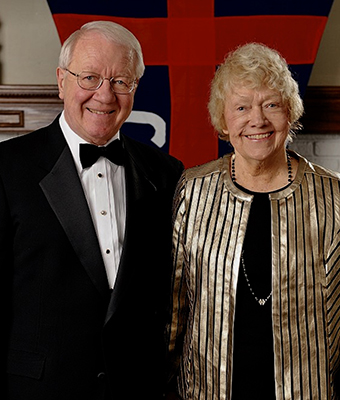
With ¬ť∂Ļ ”∆ĶÕÝ’ĺ having been an early leader in teaching undergraduate students by engaging them in collaborative research, it‚Äôs only appropriate that this year‚Äôs installment of the college‚Äôs annual student-research celebration is running a few days ahead of the national commemoration of the practice.
Original research by Hope students on topics ranging from the health benefits of exposure to natural light, to the science of coffee roasting and brewing, to personal space will be highlighted during the college’s annual A. Paul and Carol C. Schaap Celebration of Undergraduate Research and Creative Activity on Friday, April 12, from 3 p.m. to 5 p.m. at the Richard and Helen DeVos Fieldhouse. This year’s celebration is scheduled immediately in advance of national Undergraduate Research Week, designated by the Council on Undergraduate Research (CUR) and running April 15-19.
The public is invited to the April 12 event. Admission and refreshments are free.
Hundreds of Hope students engage in research with faculty mentors part-time during the school year and full-time for several weeks each summer. They regularly present their research at regional and national conferences and publish their research as co-authors with their faculty mentors.
Research has a long and storied history at Hope. More than 100 years ago, biologist Dr. Samuel O. Mast designed research laboratory space for the college’s Van Raalte Hall, which opened in 1903. The late Dr. Gerrit Van Zyl, who taught chemistry at the college from 1923 to 1964, is widely recognized for developing research-based learning at Hope in its modern sense.
Hope’s celebration, underwritten by Gentex Corporation, is designed to spotlight the quality and importance of student-faculty collaborative research at the college. First presented in 2001, it has been renamed this year to honor A. Paul and Carol Schaap, who have long been ardent supporters of Hope and the sciences.
The April 12 celebration will feature 126 research projects presented by 254 Hope students. The presentations will feature posters illustrating the projects, with students on-hand to discuss their work. The displays fill the basketball and volleyball courts and concourse of the fieldhouse.
The students and their projects will represent all of the college‚Äôs academic divisions ‚ÄĒ the arts, humanities, social sciences, and natural and applied sciences ‚ÄĒ and 22 departments and programs.
Across the past two decades, Carol Schaap, who died on Aug. 4, 2023, at age 85, and Dr. A. Paul Schaap have provided major gifts for facilities including the A. Paul Schaap Science Center, the Jim and Martie Bultman Student Center, and the Saint Anne Oratory at the Carol C. Schaap Chapel; and for endowment in support of faculty and student collaborative research in the natural and applied sciences. The funding has been in addition to the significant contributions they have faithfully made annually to the Hope Fund for more than 40 years to support students and financial aid/access to a Hope education.
The Grosse Pointe Park couple’s connection to the college was initially through Dr. A. Paul Schaap, who graduated from Hope with a chemistry major in 1967. He subsequently earned a Ph.D. in organic chemistry from Harvard University and then taught and conducted research at Wayne State University. His research focused on the study of dioxetanes (high-energy chemical compounds which can be triggered to generate chemiluminescence or light). While continuing his teaching and research efforts at Wayne State, he formed Lumigen Inc. in 1987 to commercialize the dioxetanes which had been developed in his research laboratory. Paul Schaap received a Distinguished Alumni Award from Hope in 2006, and was a member of the college’s Board of Trustees from 2007 to 2019.
Carol Schaap was on the staff at Wayne State University for approximately 30 years beginning in 1961, having previously been a secretary with the FBI and Parke Davis. She held a variety of secretarial positions during her time at the university, including first as secretary to the chair of the Chemistry Department and finally as executive secretary to the president. She and Paul met while both were employed at Wayne State, and were married on March 16, 1976.
Hope has received national recognition in a variety of ways through the years for its success in teaching through collaborative faculty-student research, and for the high quality of the research itself. As a current example, the Best Colleges guide published by U.S. News & World Report ranks Hope 27th nationwide among only 54 colleges and universities recognized for providing outstanding undergraduate research/creative project opportunities, counted among universities like Columbia, Dartmouth, Harvard, Michigan, MIT, Stanford and Yale.
Among other acclaim historically, in 1994 Project Kaleidoscope named the program in the natural applied sciences a ‚ÄúWhole Program That Works‚ÄĚ ‚ÄĒ a model for other institutions to emulate, and in 1998 Hope was one of only 10 liberal arts institutions in the nation to be recognized for innovation and excellence in science instruction by the National Science Foundation (NSF) with an ‚ÄúAward for the Integration of Research and Education‚ÄĚ (AIRE). Based on the college‚Äôs proven history of excellence, CUR chose Hope to present the national webinar ‚ÄúTransformational Learning through Undergraduate Research and Creative Performance‚ÄĚ in April 2011. In 2017, Hope was one of only three colleges or universities nationwide to receive a Campus-Wide Award for Undergraduate Research Accomplishments (AURA) from the Council on Undergraduate Research (CUR), and one of only nine to have received the recognition since the award was established in 2015.
On Nov. 16, 2010, the U.S. House of Representatives declared the week of April 11, 2011, as national ‚ÄúUndergraduate Research Week.‚ÄĚ Since that time, CUR has designated a week in April each year as ‚ÄúUndergraduate Research Week‚ÄĚ to showcase what colleges and universities are doing to celebrate undergraduate research, to congratulation students on their research, and to thank faculty and other mentors who have helped guide the way for undergraduate research.
The DeVos Fieldhouse is located at 222 Fairbanks Ave., between Ninth and 11th streets.